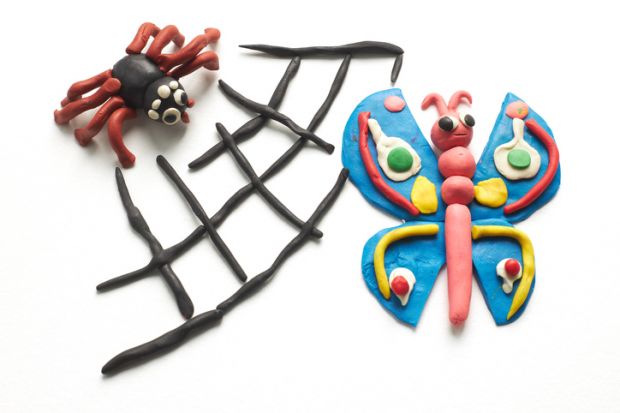Plasticine modelling has offered some surprising insights into European students’ values and sense of identity.
“Higher education policy initiatives such as the Bologna Process have made things more similar across Europe,” said Rachel Brooks, professor of sociology at the University of Surrey. She is also principal investigator of the six-year EuroStudents research project, which is looking at how students have been marked by this and whether it has led to a common consumerist identity right across the continent.
Central to the project are 54 focus groups involving three sets of students in three separate institutions in each of six countries: Denmark, England, Germany, Ireland, Poland and Spain. And every one of the 295 students involved, explained Professor Brooks, was required to “produce a plasticine figure that showed how they saw themselves, and another about how they were seen by others. They then had to explain to the group what each figure was and what it represented.”
So what led the team to adopt this somewhat unusual approach?
Professor Brooks gave the credit to one of the researchers – Jessie Abrahams, now lecturer in education and social justice at the University of Bristol – and explained why her suggestion had proved so valuable: “It made abstract ideas quite tangible. Identity is quite an airy-fairy concept, which students can find a bit difficult to talk about. Making models forced them to think about what was most important to them. It also acted as a useful icebreaker that helped them feel comfortable in each others’ company and so helped subsequent discussion.”
The combination of highly focussed models and more detailed explanations proved highly revealing, and some of the results have now been published by Professor Brooks and Dr Abrahams in an article in Sociological Research Online.
Contrary to assumptions that the trend towards marketisation would lead to a focus on value for money and employability, students right across Europe produced models of books, bulging brains, laptops merged with heads and snakes consuming their own tails to illustrate their focus on learning and hard work.
Equally striking were some unexpected differences between countries. In Poland, where participation rates have increased dramatically over the past three decades, one student reflected a common national theme by making a model of “a regular person”, since “the fact that you are attending university doesn’t make you special in any way”.
Even more dramatic, noted Professor Brooks, was the way that the models produced by Spanish students, particularly those in public universities, stood out from all the others in “representing quite negative things”. Examples were described as “a sad and frustrated doll”, “a kind of dead figure, like a skull...dragging itself along in desperation” and “a cardboard box to show that I feel like a piece of merchandise in this educational situation”. These seemed to reflect high levels of youth unemployment and a perceived combination of poor teaching with high fees.
“Much of the academic literature has argued that students across Europe are becoming more similar and think of themselves as consumers these days,” reflected Professor Brooks. Getting them to play with plasticine, it seems, can provide us with a much more nuanced picture.
Register to continue
Why register?
- Registration is free and only takes a moment
- Once registered, you can read 3 articles a month
- Sign up for our newsletter
Subscribe
Or subscribe for unlimited access to:
- Unlimited access to news, views, insights & reviews
- Digital editions
- Digital access to THE’s university and college rankings analysis
Already registered or a current subscriber?






